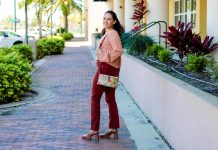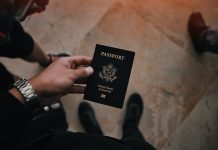Since World War II, Hiroshima, Japan has been a symbol of loss. A stroll through the Peace Park is sobering and gives me goosebumps on even the hottest of summer days. Many times, I’ve walked with my children through the park, answering questions that always start with why. I try as best I can to quench their curiosity with something that softens the real, raw event and the tragedy at Pearl Harbor that instigated it. I try, in language a 5-year-old and 7-year-old can understand, to teach them enough to keep history from ever repeating itself and to demonstrate how friendship can grow in even the rockiest soil.

Until July 7, 2018, Hiroshima meant only two things to my kids and me. It was the bare bones of a tragic chapter in the U.S.-Japan relationship, and it was the bustling city roughly an hour northeast of our home in Iwakuni, Japan. It’s where we ring the peace bell, and it’s where we go to Costco. It’s truly an intersection of history and modern convenience.
On July 7, 2018, though, it became a beacon for the three of us — a life preserver perpetually out of reach. That morning, my 7-year-old son, 5-year-old daughter, and I landed at the Hiroshima Airport (which, confusingly enough, is not even in Hiroshima city, but rather in Hiroshima prefecture). The airport is more than an hour east of the city, which makes it about two and a half hours away from the gates of Marine Corps Air Station Iwakuni. We were returning from five action-packed days with my parents on Oahu.
The Journey Begins
We’d spent the night of July 6th inside the Tokyo Haneda airport. Not a rookie at overnight airport stays, I was surprised to learn that they aren’t really a thing in Japan. Instead, we were escorted by a kind night guard away from the perfect sleeping bench near the check-in counter and down an escalator (with an oversized suitcase, no less) where he said in broken English we would be allowed to stay for the night.
Once downstairs on the first floor, the escalator stopped running, the baggage claim lights to our right turned off for the night, and the background music stopped permeating out of the loudspeakers. Moments later, we were approached by a second security guard who used his English language guidebook to explain that we needed to sign a waiver — complete with names, passport numbers, and birth dates in order to stay overnight. I complied even though this seemed absurd to completely lock up an airport in one of the biggest cities in the world for just a few hours. It was almost midnight and we were checking in for our flight in less than five hours.
So, waivers granted, the kids snoozed a few hours across the benches in the arrival lobby while I text friends and family back in the states in real time (something that rarely happens because I’m usually asleep) and read 50 pages or so in the book I dragged all the way to Hawaii and never touched.
The only noise was the sound of the floor buffer and the mechanical screech of the gates rising and lowering as the two-person cleaning crew moved to different areas of the building. Occasionally, one of the two janitors or night guards would walk by me. I would look up to smile, but we never made eye contact.
It was eerily quiet — a quiet I can see in hindsight was the calm before the actual storm. I should’ve put down my book and closed my eyes as well.
Just before 5 a.m., I checked the weather in Hiroshima and Iwakuni, having seen Facebook posts from other Iwakuni residents riddled with complaints of rain and the occasional flash flood. It was rainy season, so I didn’t think much of it. I just wasn’t excited to drive home in the rain with only two, non-consecutive hours of airplane sleep under my belt.
I knew exactly when the opening crew clocked in at the airport, and I placed bets (against myself since the kids were still asleep) on the order of switches in front of him. In my mind, there was one big fuse-box-type panel, and he was going one-by-one flipping them to on. First came the lights in baggage claim, then the background music cranked back on. Next came the arrivals board, followed by the escalators springing back to life. That was our cue. I gently woke the kids, got them a juice from the vending machine — the only thing we’d had in a day if you aren’t counting the nutritional goodness of my half-pound bag of Twizzlers and the couple bites of our airplane dinners.
Once checked in and at the gate, I paid more attention to the weather. I started getting really nervous that they might cancel or postpone our flight because of the thunderstorms. I remember praying, in sort of a bargaining-adjacent tone (which I realize is probably not the best approach to prayer), that I didn’t have it in me to hang out in the airport all day after spending the night there, and if God could just get us to Hiroshima, I would get us home from there.
I didn’t know what I was asking for. I didn’t know the severity of the situation, the rising water, the rising death toll. All I selfishly knew was that I wanted to have a big glass of wine and sleep in my own bed.
Despite the announcement of several other flight cancellations, we boarded on time. As we taxied down the runway, I calmly told my kids (there was no threat of being anything but calm because I didn’t know the 2018 Japan floods were happening all around us) that it would probably be raining all the way home and that I would need them to be really quiet for me in the car. I would need to concentrate. They accepted the challenge.
The flight was short, not nearly long enough to sleep. So, I stayed awake. The turbulence started as we made our final descent toward Hiroshima. I always get a little claustrophobic when all I can see out the plane window is cloud. It’s a strange, uncertain feeling. I don’t like not knowing when we will come out of the cloud or when the bumps will be over — I don’t know if that classifies as claustrophobia or if I’m just addicted to being in control of situations.
The last shaking moments before we came out of that cloud were easier than what followed. In the cloud, my eyes had never seen raging rivers — rivers that were orange with mud instead of the clear, calm streams we saw as we departed the airport. I noticed too, that these rivers knew no border. The orange, whitecapped sludge infected rice paddies, streets, and baseball fields as far as my eyes could see.

Before our wheels ever touched the ground, I regretted that deal I made with God. I thought of how different our day could’ve been had our flight been canceled. We’d likely be checking into a hotel for the night and walking through a part of Tokyo we’d never explored. But that hypothetical scenario was out of reach now. This is what I’d asked for.
Photo Credits: Associated Press










































